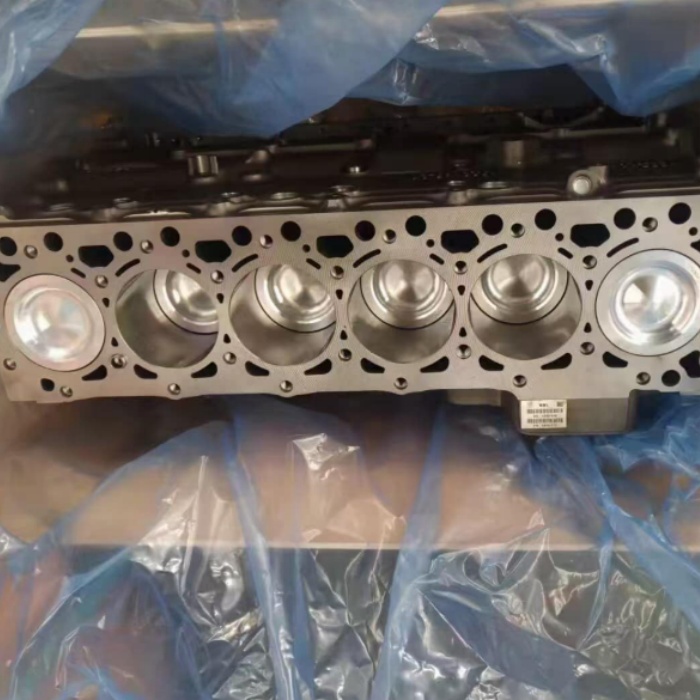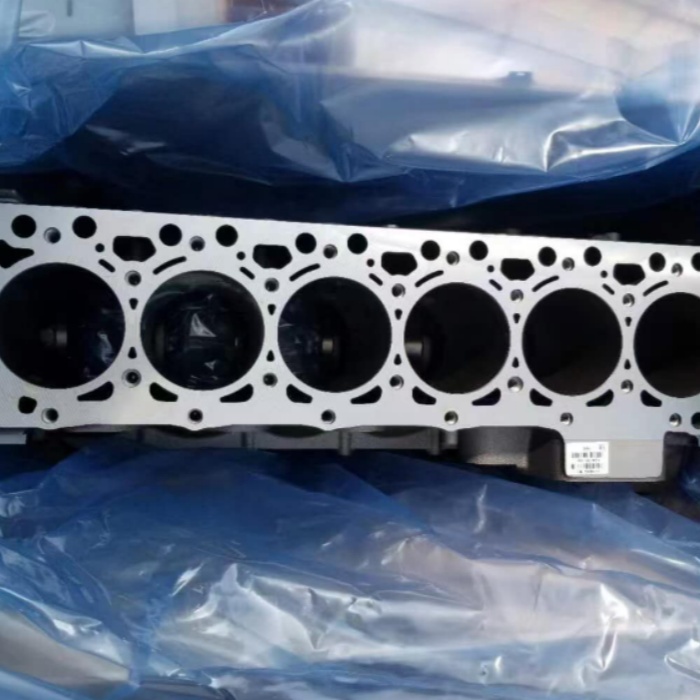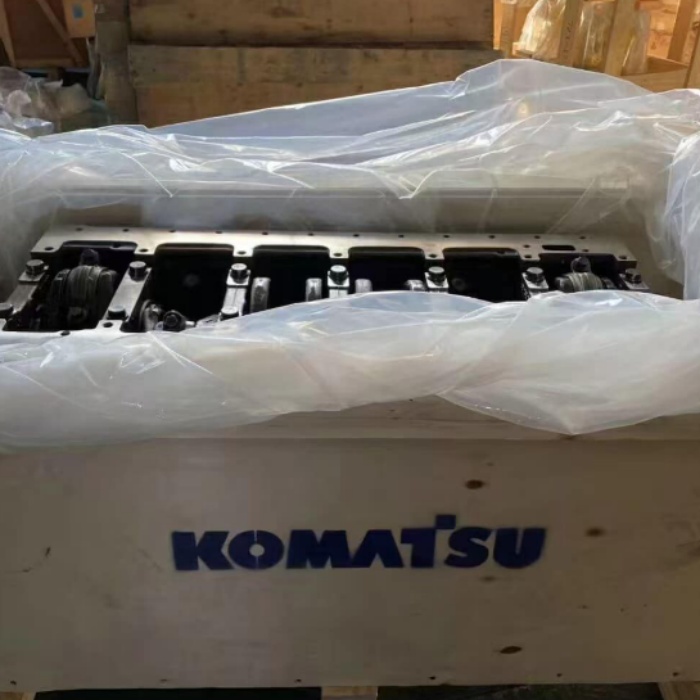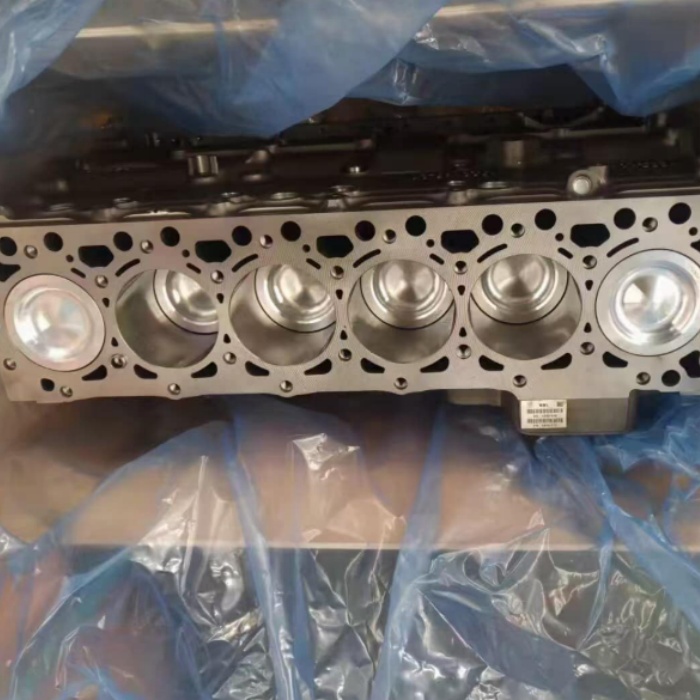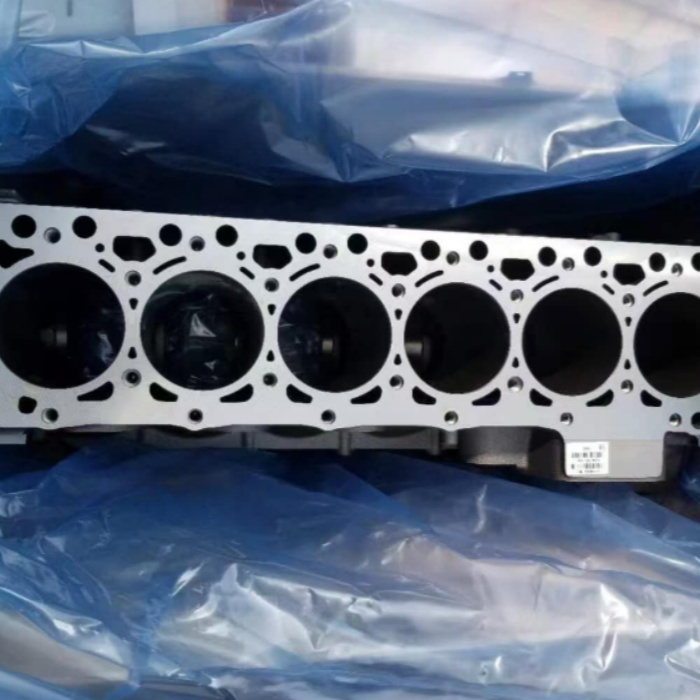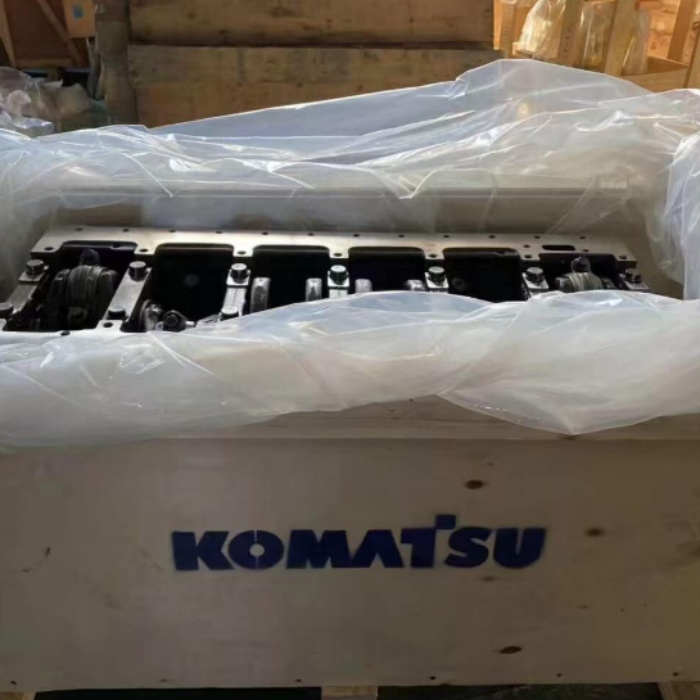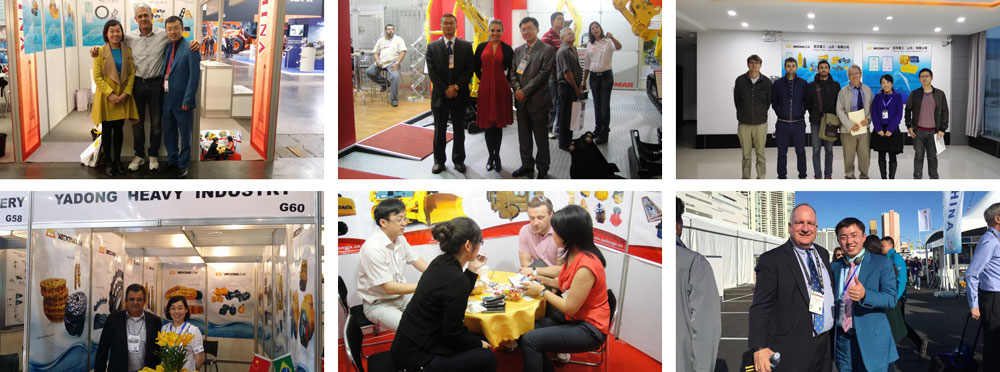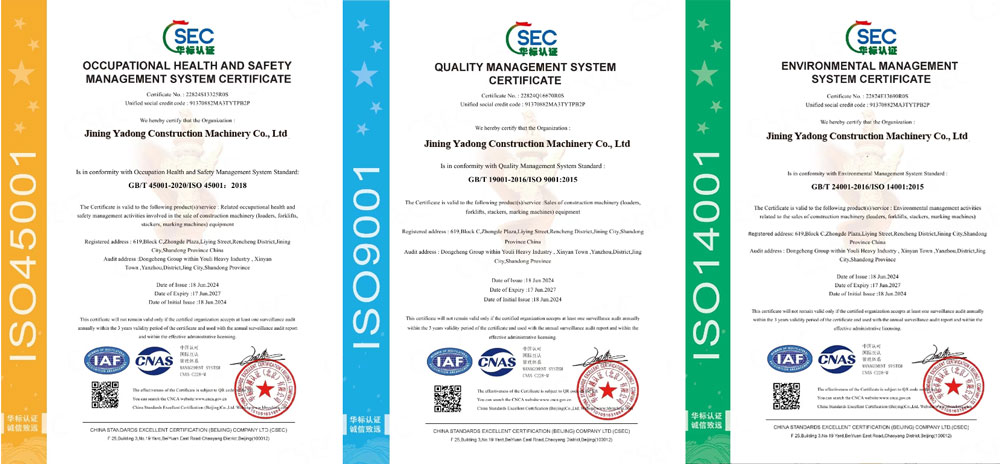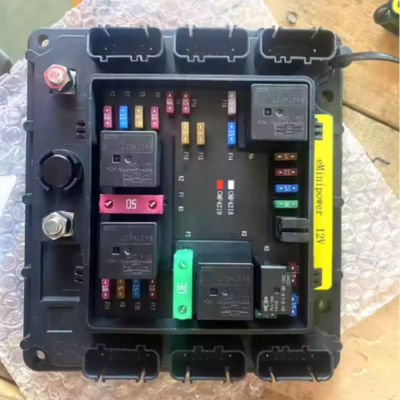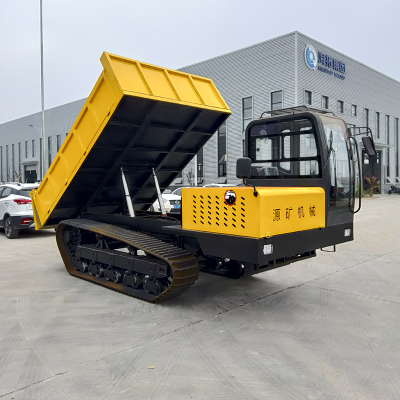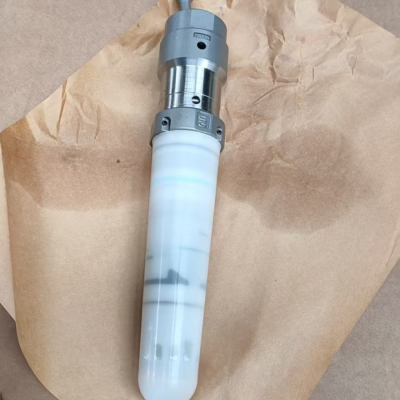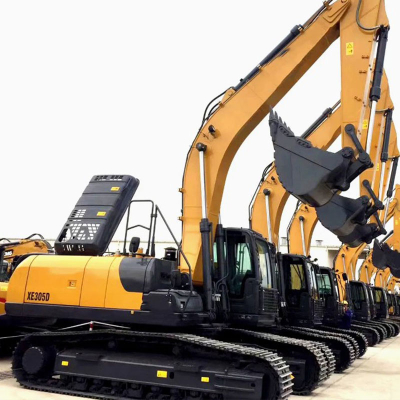Komatsu 6754-21-1310 Engine cylinder block
1 、 exact compatibility : is specially designed for the corresponding models of engines , compatible with other engine components , which provides ease of installation and uninterrupted operation as part of the whole system.
2 、 High strength and durability : is made of a durable alloy, which withstands high pressure and temperatures that occur during the operation of the engine. This guarantees a long service life and rare breakdowns.
3 、 The optimal heat -bearing capacity : has a thoughtful design of the cooling system, which allows you to effectively remove heat from the working cylinders. This prevents the engine overheating and ensures its stable operation.
Product representation
Detailed product information
Function: This is the main component of the engine that carries a cylinder and, together with the crankcase, forming the combustion and power core. It provides support for key details, such as piston and crankshaft, and also provides channels for the coolant of the engine and oil to provide normal cooling and lubrication of the engine.
Materials and structure: Material, as a rule, is a gray cast iron that has good strength, wear resistance, heat resistance, depreciation, foundry and processing. Some are made of aluminum alloy to achieve lightness. Inside there are complex structures, such as the holes of the cylinder and the holes of the crankshaft. The upper plane of the cylinder block serves as the mounting surface of the cylinder head and, together with the head of the cylinder block, forms a combustion chamber. The front end surface of the cylinder block is used to install additional accessories, such as a water pump and an oil pump node, and the rear end surface is usually installed with a flywheel or transmission.
Technical characteristics: various models of cylinders of Komatsu engines have different technical characteristics. For example, the cylinder of the Komatsu 6D102 engine, suitable for PC200 excavators and others, has certain sizes, such as the cylinder diameter and cylinder length, to meet the output power and operational requirements of this engine model.
Stages of installation
Preparation: Prepare the necessary tools, such as various wrenches, screwdrivers, calipers, dynamometric keys, etc., as well as new engine blocks, gaskets, lubricants, sealants and other materials. Also make sure that the workplace is clean and tidy.
Disassemble the old cylinder block: first disconnect the negative terminal terminal and drain the coolant and engine oil. Then take turns remove the details connected to the cylinder block, such as inlet and exhaust pipes, an oil pallet, cylinder head, cable shaft, piston connecting rod, etc., and remove the old cylinder block from the engine body.
Cleaning and inspection: thoroughly clean the disassembled parts with a detergent and brush to remove contamination from the surface such as oil, soot and rust, and blow them with dry air dry. Check if you are worn out, not deformed and whether the crankshaft, piston and other parts are damaged. If there are any problems, replace them on time.
Install a new cylinder block: evenly apply the sealant layer to the mounting surface of the cylinder block, reliably install a new cylinder block on the engine housing, combine installation pin or installation holes, and then tighten the mounting bolts of the cylinder block several times in accordance with the indicated puff moment and sequence. Install the crankshaft, apply lubricating oil to the crankshaft neck and the surface of the bearing, place the crankshaft in the hole of the crankshaft of the cylinder unit, install the crankshaft and tighten the cranked shaft bolts. Install the piston and connecting rod node, install the piston ring on the piston, then insert the piston and the connecting rod into the cylinder hole, tighten the piston ring using the clip of the piston ring, lightly tap the piston with a hammer with a wooden handle or other tool so that it enters the cylinder, install it, install rod cover and tighten the bolts Cricket with the indicated puffing moment.
Installation of the remaining parts: install an oil tray, apply sealant on the sealing surface of the oil pallet, install the oil tray on the cylinder block and tighten the bolts. Install the cylinder head, install a new gasket on the sealing surface of the cylinder head head, reliably install the cylinder block on the cylinder block and tighten the cylinder head bolts in accordance with the indicated puff moment and the sequence. Squeezing the inlet and exhaust pipes, a water pump, an oil pump, a generator and other accessories.
Checking and testing: Check if all the parts are reliably installed and whether all compounds are well sealed. Add the required amount of coolant and motor oil, connect the negative pole of the battery, start the engine, check if the engine is smooth, whether there are extraneous noise and leaks, and also check if the parameters as the oil and water temperature correspond to the norm.
Common errors
Cylinder wear: air filter malfunction or poor filter filter capacity leads to pollution in the cylinder; Low quality of lubricating oil, prolonged work at low temperatures, excessive gap between the cylinder and the piston, problems with piston rings, etc. - all this can lead to wear of the cylinder.
Cracks in the cylinder block: the engine operates at high temperature and high pressure. If it is subjected to shock loads concentrated with thermal voltage or defects in the material of the cylinder block, cracks may occur. In addition, if you do not replace the cooling liquid in the winter in time, the water will freeze and expand, which can also lead to freezing and cracking of the cylinder.
Examination of the cylinder: in the process of production, if the process of casting the cylinder was wrong, internal voltage may occur. During use, the internal voltage is released and causes the cylinder deformation. In addition, prolonged engine operation under high load, poor heat removal or incorrect installation can also cause uneven heating of the cylinder and its deformation.
The density malfunction: aging, damage or incorrect installation of gaskets between the cylinder block and the cylinder block, an oil pallet and other components can lead to a coolant and motor oil leakage.
After -sales service
Warranty service: Komatsu engine cylinders usually have a certain warranty period. During the warranty period, if the malfunction occurs due to problems with product quality, you can use free repair or replacement services.
Technical support: Komatsu provides professional technical support. Users can get a technical guide for the installation, use, maintenance of cylinders, etc. Through the hotline of customer service and online consulting.
Supplies of accessories: a comprehensive system of supplies of accessories has been created, which provides the timely supply of cylinders and related accessories, as well as a reduction in equipment downtime.
Weapons of maintenance: we have an extensive network of after -sales service around the world, including numerous authorized repair stations and professional technicians, which can quickly respond to users' needs for maintenance and provide repair services “from the door to the door” or delivery.
Regular repeated visits: after -sales service employees will regularly visit users to evaluate the use of cylinders and the degree of user satisfaction, collect opinions and offers, as well as constantly improve the quality of products and services.
The Komatsu engine installation method will vary depending on the application scenario (for example, an excavator, loader, generator installation, etc.) and a specific model, but there are some common main steps and moments in general. Below is a general introduction to the installation method:
Preparation for installation
Preparing the place and tools: select a clean, spacious, even and well -ventilated place for installation and make sure that there is enough space for operation and the engine and related components. Prepare the necessary tools, such as wrenches of various specifications, heads, screwdrivers, dynamometric keys, jacks, lifting equipment (for example, taps, tali, etc.), levels, etc.
Inspection of the engine and details: carefully examine the appearance of the new engine to make sure that there are no damage to during transportation, such as cracks, deformations, missing parts, etc. Check all engine interfaces to make sure that there are no blockages or extraneous objects. Counting and checking the accessories and attachments supplied with the engine, for example, inlets and exhaust pipes, filters, belts, bolts, gaskets, etc., to make sure their completeness and intransigent.
Checking the foundation and support structure: if the engine is installed on mechanical equipment (for example, the excavator chassis), check the strength of the main design of the equipment and the absence of deformations, cracks or other damage. For engines installed on a fixed foundation (for example, generator installation), it is necessary to check the flatness, horizontal and strength of the foundation in order to make sure that the foundation can withstand the engine weight, as well as the vibration and load that occur during operation.
Rise and positioning of engine
Connection of lifting equipment: select the appropriate lifting equipment and slings in accordance with the weight and shape of the engine. Correctly connect the lifting sling to the engine lifting point. Typically, the engine has special lifting holes or lifting eyes. Make sure that the connection of the lifting sling is strong and reliable to avoid weakening or falling during the rise.
Lifting and positioning: Use lifting equipment to carefully raise the engine and slowly move it to the installation site. During the rise, make sure that the engine is in equilibrium, and avoid collisions with surrounding objects. Carefully place the engine at the specified place of the installation foundation or mechanical equipment, making sure that the installation holes of the engine coincide with the holes for the foundation or equipment.
Preliminary fixation and positioning: Use the corresponding bolts and washers to initially fix the engine in the installation position, but do not tighten the bolts completely. By adjusting the engine position, it can be accurately installed. You can use the level to check the engine level to make sure that the engine is balanced in the horizontal direction. For some details requiring accurate leveling (for example, engine and transmission connection), special positioning or measuring tools are used for adjustment.
Connect related components
Connection of the transmission system: If the engine is connected to the transmission components, such as transmission and clutch, the connection must be performed in the correct order and method. For example, install the connecting bolts between the engine and the transmission and tighten them with the indicated puffing moment. Check the gaps and the alignment between the components of the transmission to ensure the normal operation of the transmission system.
Connection of the intake and exhaust systems: install the intake and exhaust pipes, making sure that the connections are hermetic and have no leaks. For some engines with superchargers, special attention should be paid to the connection of the supercharger with intake and exhaust pipes in order to avoid damage to the supercharger. Install the air filter and make sure that it is installed in the correct position and is reliably sealed so that the engine can inhale clean air.
Connection of the fuel system: Connect the fuel lines, including the fuel tank, to the fuel pipe of the engine, the fuel filter, the injector and other components. When connecting the fuel lines, make sure that they are not twisted and not locked, and the connections are well sealed to prevent fuel leakage. Install the fuel filter and first fill it with oil in accordance with the prescribed method to remove air from the fuel line.
Connection of the cooling system: Connect the coolant pipeline, including the connection of the radiator, water pump, coolant hose and other components. Make sure that the compounds of the coolant pipeline are reliable and there are no leaks. When installing the coolant hose, be careful to prevent excessive overclocking or leaving the hose, as this may affect the circulation of coolant. Add a suitable coolant to the cooling system and check if the coolant level is located within normal limits.
Connection of the lubricant system: Install the oil filter and add the required amount of oil corresponding to the specifications to the engine oil tray. Connect the oil pipelines to ensure normal oil circulation and lubrication of various parts of the engine.
Connections of the electric system: electric circuits connecting the engine, including wired connections for components such as a starter, generator, sensors, spark plugs (for gasoline engines), etc. Make sure that the electric circuits are connected correctly, without a short circuit or cliff. Install the battery and connect the positive and negative cables, making sure that they are securely connected and not weakened.
Checking and debugging
Comprehensive check: After completing the connection of all components, conduct a comprehensive engine check. Check if all the bolts and nuts are tightened, whether the connections of various components are reliable, whether there are leaks or interference in pipes and lines. Check the correct installation of various engine accessories, for example, the correctness of the belt tension, the fan rotation smoothness, etc.
Add liquids: check the levels of coolant, motor oil, fuel and other liquids again to make sure that they are in the indicated range. If this is not enough, add on time.
Preparation before launch: for some engines requiring preliminary heating or preliminary lubrication, perform appropriate preparation in accordance with the requirements of the operating manual. For example, use a tool for preliminary lubrication of the engine to guarantee a complete lubrication of all components when starting.
Launch and debugging: Launch the engine and watch it. Check if the engine is stable for the engine of the engine and whether there are no extraneous noise or vibration. Check if various devices and indicators work normally, for example, an oil pressure indicator, water temperature indicator, charging indicator, etc. Check the engine emissions to make sure that emissions of the exhaust gases meet the requirements. Perform engine debugging work, such as adjusting the idle speed, the ignition angle (for gasoline engines), the injection angle (for diesel engines) and other parameters to bring the engine to the best operating mode.
The general way to install Komatsu engines is above. During the actual installation process, be sure to strictly follow the engine operating manual and the corresponding technical characteristics to ensure the quality of the installation and the normal operation of the engine.
The common malfunctions of the Komatsu engines affect several systems and can affect the performance, reliability and service life of the engine. Here are some common mistakes:
Lack of power
Problems with the fuel system: a clogged fuel filter, a faulty fuel pump, a clogged nozzle or uneven fuel injection can lead to poor fuel supply or inaccurate injection, which will lead to incomplete combustion and reduction of engine power.
Problems with the intake system: clogging of the air filter, leakage in the intake pipeline, a malfunction of the supercharger, etc. will lead to insufficient air flow into the engine, which will affect the efficiency of combustion of fuel and reduce the engine power.
The problem with the valve: the poor valve seal and the wrong valve gap will lead to a decrease in the compression degree in the cylinder, which will make it impossible to effectively transform the energy produced during combustion to the output power.
Vibration of the engine
The ignition system malfunction (for gasoline engines): the wear of the spark plugs, the ignition coil malfunction, the high -voltage wire leak, etc. can lead to inaccurate or untimely ignition, which leads to uneven operation of the engine cylinders and trembling.
Uneven fuel injection: a malfunction of the nozzle leads to uneven fuel injection into each cylinder, which makes the engine unstable engine and causes trembling.
Mechanical malfunction: wear or damage to such components as a piston, a connecting rod and crankshaft, violate the engine balancing and cause its vibration.
Excessive fuel consumption
Fuel system malfunction: nozzles leak, excessive or low fuel pump pressure can lead to an abnormal increase in fuel consumption.
Flowing of the air filter: increases the resistance of the inlet, insufficient volume of air and incomplete combustion of fuel, which leads to an increase in fuel consumption.
Mechanical engine malfunction: wear of piston rings, cylinder wear, etc., the cylinder tightness is worsened, which leads to loss of engine power and an increase in fuel consumption.
Overheating of the engine
The cooling system malfunction: insufficient amount of coolant, cloth clogging, water pump malfunction, cooling fan malfunction, etc. will lead to poor heat removal from the engine and temperature increase.
The thermostat malfunction: if the thermostat does not open and does not close normally, this affects the circulation of the coolant and makes it impossible to maintain a normal operating temperature with an engine.
Long -term work with a high load: the engine emits too much heat exceeding the possibility of the cooling system for scattering heat, which leads to overheating.
Abnormal oil pressure
Flowing of the oil filter: increases the resistance of the oil flow and leads to an increase in oil pressure; If the clogging is serious, the oil cannot circulate normally, and the pressure may fall.
The oil pump malfunction: if it is worn or damaged, the oil pump productivity will decrease, and the oil pressure will be insufficient.
Insufficient amount of engine oil: an oil pump cannot absorb a sufficient amount of engine oil, as a result of which the oil pressure becomes too low.
The difficulty of starting
Fuel system problems: air in the fuel line, a non-working fuel pump, an injector not spraying fuel, etc., all this leads to the fact that the engine does not receive enough fuel and is difficult to start.
Problems with the ignition system (for gasoline engines): lack of ignition of spark plugs, inaccurate ignition timing, etc., will not allow the engine to start normally.
Insufficient battery charge: The starting motor will be de-energized and will not be able to power the engine.
Exceeding emission standards
Incomplete combustion: Faults in the fuel system, intake system, or ignition system will result in incomplete combustion of the fuel, resulting in large amounts of harmful gases such as carbon monoxide and hydrocarbons.
Three-way catalytic converter malfunction: If the three-component catalytic converter is damaged or blocked, it cannot effectively convert harmful gases into harmless gases, which will exceed exhaust emission standards.
Abnormal sound
Piston knocking: If the gap between the piston and the cylinder wall is too large or the piston pin is loose, the piston will knock on the cylinder wall and produce an abnormal noise.
Abnormal valve noise: Excessive valve clearance, damaged valve spring, etc., may cause the valve to make abnormal noise when operating.
Unusual chain or timing belt noise: The chain or belt is worn or loose, resulting in noise during operation.
Exhibition cabinets
Acquaintance with the plant
The factory has a team of highly qualified and experienced engineers who continuously introduce technological innovation and improve products. At present, the company owns a number of independent intellectual property rights and patented technologies. The manufactured construction equipment includes a wide range of equipment, such as excavators, loaders, cranes, bulldozers and other machines. The products are characterized by high performance, reliability, energy efficiency and environmental friendliness, as well as the ability to adapt to difficult operating conditions in various climatic and working environments around the world.
Awards and qualifiersFiction
Frequently Asked Questions
1. Which countries do we export to?
Asia: Vietnam, India, Indonesia, Pakistan, Kazakhstan, Uzbekistan, etc.
Europe: Russia, Belarus, Ukraine, Lithuania, Saudi Arabia, etc.
South America: Brazil, Chile, Paraguay, Argentina, etc.
Africa: South Africa, Ethiopia, Libya, etc.
2. What payment terms can we accept?
Usually we can work on T/T, 30% TT before production and 70% TT before shipment
3. What logistics ways can we work for shipping?
1) For most countries in Europe, South America and Africa, etc., we can go by container or Roro through ocean freight.
2) For China's neighboring countries, such as Russia, Vietnam, Kazakhstan, Uzbekistan, etc., we can deliver by road or railway.
3) For light spare parts in urgent requirement, we can send it by international courier service, such as DHL, TNT, EMS or other air freight.
4. How can you ensure that you have delivered the goods to customers?
A: We will provide you with full shipping information for you confirmed.
5.What are our advantages compared with other manufacturers/factories?
1) Reliable Quality: Carefully select regular manufacturers to support spare parts such as engines, axles, transmissions, and many parts designed and produced by us, always adapting the best materials.
2) Competitive price: The concentration of mechanized production in large quantities reduces production costs to ensure a competitive price.
3) Service Team: Firstly, our sales managers are available 24 hours a day, ready to answer your questions at any time. Secondly, a professional technical service team with senior technicians, ready to provide support services to users and dealers. Most problems can be resolved within 24 hours.
4) Fast Delivery: Generally, we can deliver within 10 working days at the factory after receiving the advance payment from customers.
6. How can you provide customers after sales service?
A: We will answer you at first and help you solve problems within 24 hours. If we really need your local, we
We will send your professional person to your settlement to help you solve problems without any fluctuations, supply you with comprehensive

